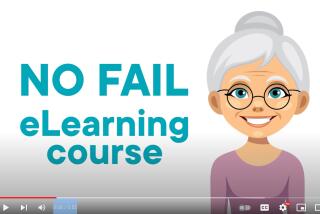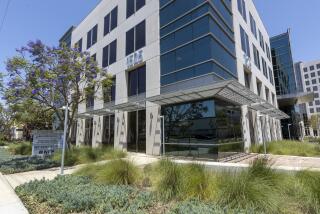More drivers acquiring disabled parking placards
The term “disabled” may evoke images of wheelchairs or crutches, but it is a far broader category — particularly when it comes to getting disabled parking placards.
More than one in 10 California motorists are disabled, according to the California Department of Motor Vehicles. At the start of this year, the agency had issued about 2 million permanent placards, 158,000 temporary placards, 345,000 disabled person license plates and 17,500 disabled veteran license plates.
In total, about 2.6 million out of about 23 million licensed drivers in the state are classified disabled, or about 11%.
The numbers are so large, the controls on getting these placards so squishy and the anecdotes about abuse of the privilege so stunning that something fishy seems to be going on.
The large numbers reflect many trends: the recognition that disabled people need some considerations to reach their potential for economic and social contribution to society, the advancing average age of the public and a broader definition of what it means to be disabled.
The various categories of disabled-person placards and licenses all provide roughly the same privilege: They allow a motorist to use special parking slots at the grocery store, gym and shopping mall, park free at any meter and disregard time limitations at any legal street parking space.
In big downtown districts, a parking placard can be worth thousands of dollars a year in free parking.
Sacramento conducted a survey of the four blocks surrounding the state Capitol a few years ago and found that 100 out of 139 parked cars displayed disabled placards.
“It was over the top,” said city spokeswoman Linda Tucker. “These placards are like gold.”
As a result of such abuse, the city has set up one of the toughest enforcement programs known, assigning two undercover parking enforcement officers to catch fakers.
“We need to do this to keep the spaces open for the legitimately disabled,” Tucker said.
The officers don’t typically approach a person without having first determined there’s a discrepancy between the placard’s registered owner and the person using it.
They don’t, nor should anybody, try to figure out who is disabled by appearances.
But on a typical day, they are out beating the streets looking for those smarmy motorists who want to join the ranks of the disabled parkers but suffer from only whatever illness they have created in their corrupt minds to justify their behavior. In some cases, people have even used their deceased parents’ placards. How crass.
About once every business day, or 25 times a month, the enforcement team nabs a scofflaw. Most are found guilty of a misdemeanor charge. The fines are no joke, running between $800 and $1,500.
Even when they are caught, the fakers often don’t want to give up their free parking. In one case, a woman was so upset that she tried to bribe the undercover cop, recalled Ursula Johnson, who runs the Sacramento program. The parking enforcement officer politely demurred, though he could have charged her with a felony. In other cases, people have tried to drive off.
Such demented behavior is not new, of course. In 1999, 16 then-current and former members of the UCLA football team, including a quarterback, defensive back and fullback, pleaded guilty to improperly obtaining disabled placards and, in some cases, of using them on campus. Perhaps not coincidentally, they lost the Rose Bowl that year.
Of course, those strong boys are only one example of extreme placard abuse. Consider a Social Security judge in Tampa, Fla., who earlier this year was found using another person’s placard in his silver Mercedes Benz AMG coup outside the court.
The judge’s job involved deciding who qualified for Social Security disability benefits.
All of these kinds of abuses might argue for tougher controls on exactly who can get a placard. An easy fix might be to put a photograph of the disabled person on the placards.
California law is also vague, compared with other states, when it comes to setting criteria for the disabled.
The California Vehicle Code defines “disabled” as those who have “conditions” that include heart or circulatory disease; lung disease; a diagnosed disease or disorder that significantly limits the use of the lower extremities; specific documented visual problems; loss of use of one or both lower extremities or both hands.
It doesn’t define what kinds of heart or lung conditions would put an individual on an equal par with somebody who has lost both limbs, however. “It is not DMV’s place to compare disabilities,” said agency spokesman Steve Haskins.
By contrast, the New York DMV law is much more specific. It sets such criteria as an inability to walk 200 feet without stopping, use of portable oxygen and lung disease that sets specific volumes of breathing rates. It requires a disability to impose “unusual hardship in the use of public transportation and prevents the person from getting around without great difficulty.”
Despite abuse in California, the Legislature last year relaxed the procedures for getting a placard. In the past, a doctor had to certify that a person was legitimately disabled. Now, the certifications can be made by midwives, nurse practitioners and physician assistants. The sponsor of that bill, Carol Liu, left the Assembly at the start of the year.
Whom does abuse hurt the most?
The truly disabled. In Sacramento, parking officer Gino Henry recalls the time he stopped a woman to question whether she was improperly using her placard. He noticed that she was missing an arm and apologized.
“She said, ‘That’s OK, officer. I appreciate you doing your job,’ ” he recalled.
ralph.vartabedian@latimes.com







